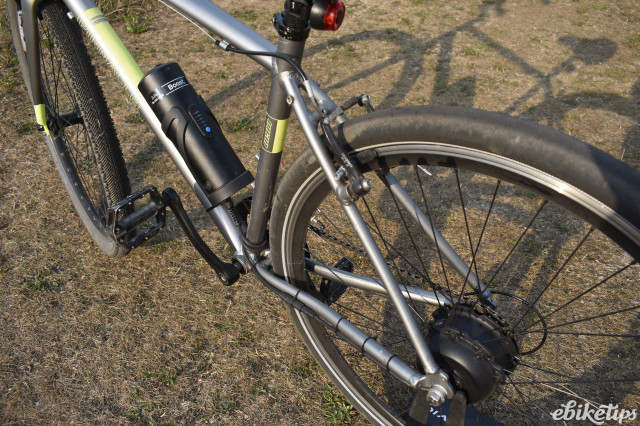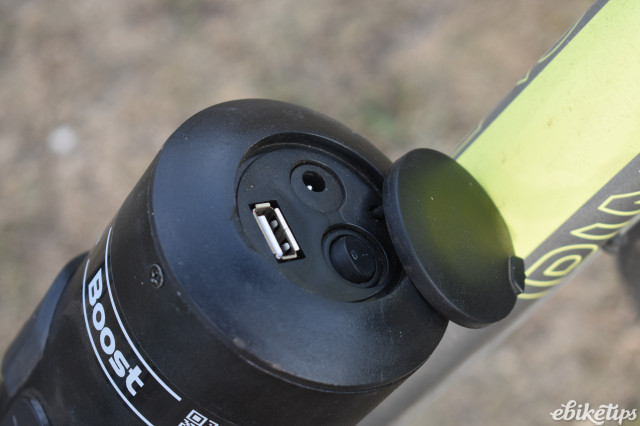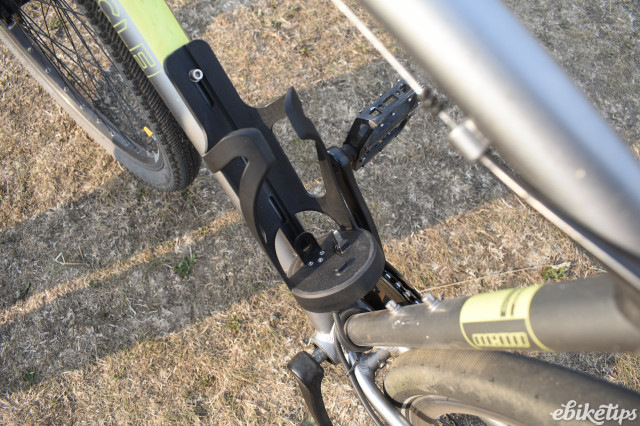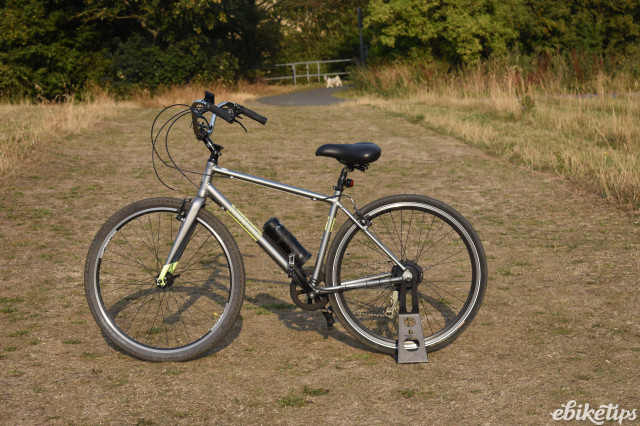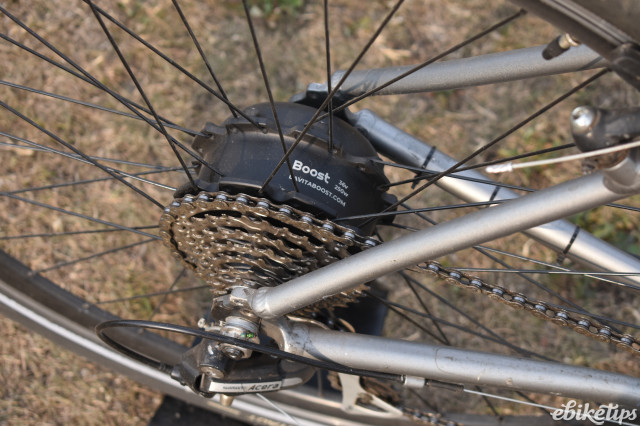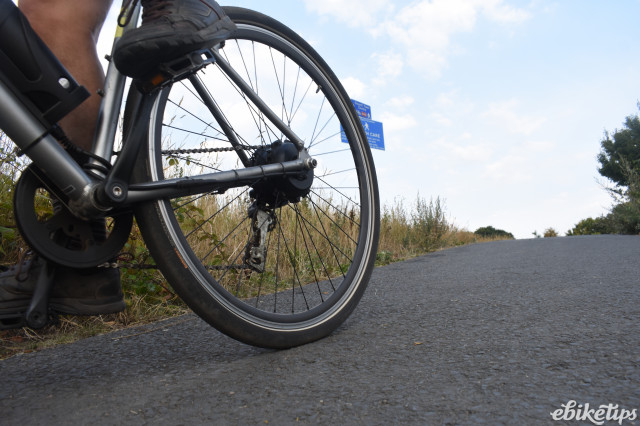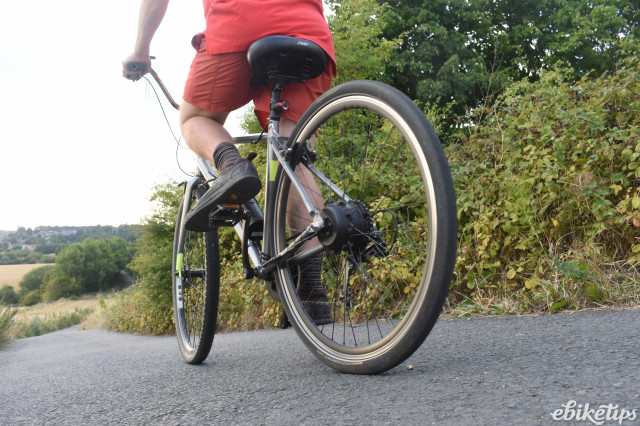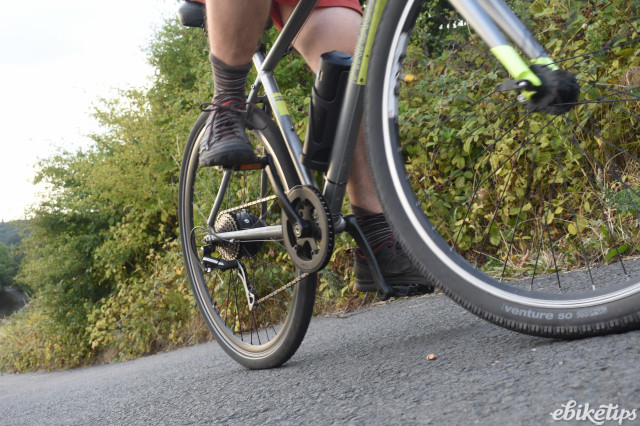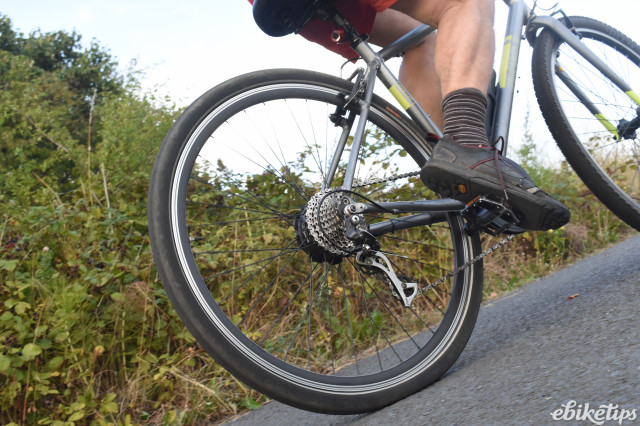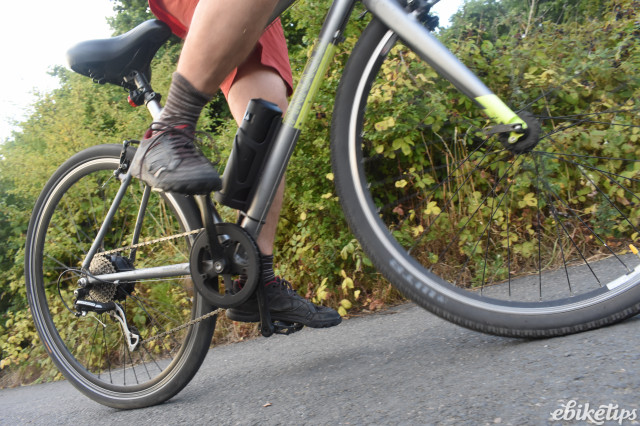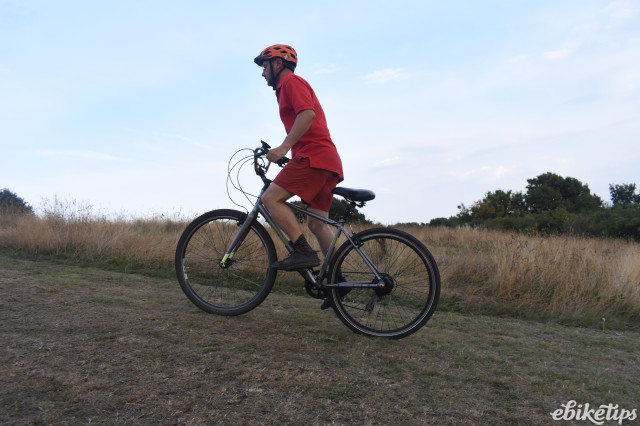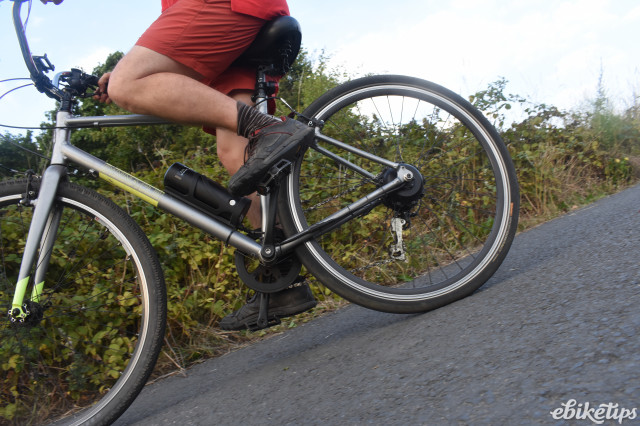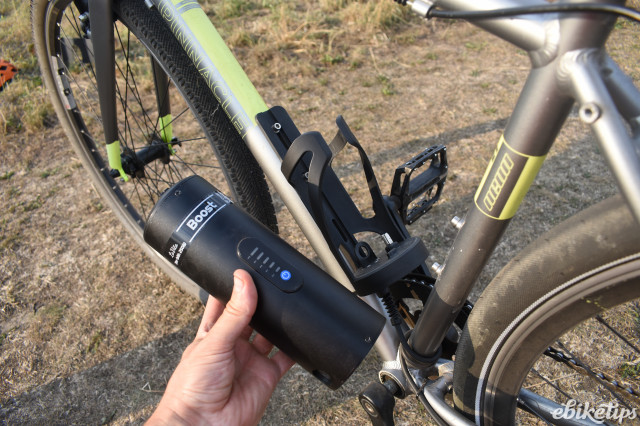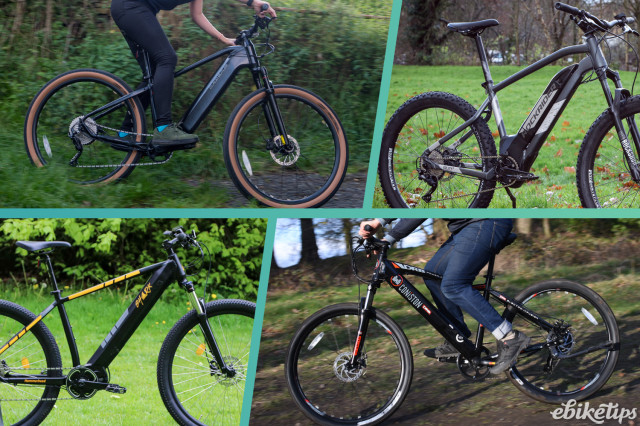Review: LaVita Boost e-bike conversion kit
Overview
- Easy to fit
- Looks very neat on the bike
- Lightweight and well balanced
- Not as powerful as some other kits
- Low speed power delivery in particular could do with a boost
LaVita Boost is a relatively new kit that is simple to fit and looks neat on your bike. It drew our attention because it only consists of two main parts, a geared rear hub motor and a relatively small capacity 216Wh 'bottle battery' that will fit on most bikes that are able to take a regular sized water bottle. The two are then simply connected. There is also a wireless handlebar control and an app which have similar functions with regards to altering power settings and data feedback.
The motor comes ready spoked in 700c and 26" wheel rims complete with gear cluster (7 to 11 speed available on 130/135mm dropouts and a single speed version motor if you have 120mm dropouts). If you opt to fit it yourself, you'll need the basic skills of being able to swap the tyre and inner tube onto the new wheel and fit it into the frame.
The bottle battery should screw mount onto the seat tube or down tube, depending which has bottle mounts (frames without bottle mounts may need some rivnuts fitting, though this is best left to a bike shop as they should have the special tool required).
It's then a matter of connecting the single wire housing all the sensor and power cables necessary for operation between the two. The wireless handlebar control takes a matter of seconds to fit and, as long as the battery is switched on, it will automatically link to the system.
LaVita say the weight added to the recipient bike should be under 4kg (the exact figure depends on the weight of what is replaced). After conversion our bike weighed 16kg and before conversion weighed something over 12kg, so this appears correct.
Overall, on first appearances, it looks a very neat solution - indeed it's the most visually minimalist retrofit kit we've seen yet. The battery could pass as a water bottle at first glance and there is no obvious motion sensor - these often feature as a magnet ring around the bottom bracket on other kits. Magnet rings are not the most elegant or the most damage-proof solution and the Boost kit avoids this by incorporating a magnetic motion sensor into the motor assembly itself - something usually found only on more expensive OEM motors that only available to manufacturers.
The control electronics are neatly housed in the small gap in the base of the bottle battery holder and LaVita say the software is easily updated over the air, so all Boost riders should have access to the latest software update.
Performance
Overall this is a lovely lightweight system. I fitted it to a lightweight leisure bike; a Pinnacle frame, probably more than a decade old, that was brought out from the back of the garage. It still had all working parts including swapped-out bullhorn style bars with longer cables, the start of a conversion project to make a lightweight but ultra-comfortable leisure bike that was never finished. The Boost kit was fitted in around 20 minutes and a pair of non-matching 700c tyres that were also languishing in the garage completed the conversion.
General impressions out on the road were very positive. Once you've gained a little speed the power is applied very smoothly. It kicks in less than a second after you start pedalling and stops even more quickly when you stop the cranks.
This smooth, economic power delivery was reflected in the range results returned by the kit. It completed 25-30 miles of pretty hilly country riding, with a few decent quality off-road tracks thrown in, before the power started to wilt just a little at around 33 volts showing on the display. If ridden in the lower Eco power level, over only moderately hilly country, you might well get 40 miles with a light rider on a light, efficient bike. That represents superb performance from a 216Wh battery.
The main performance idiosyncrasies are related to the fact that power delivery increases automatically as road speed increases. So below 4mph there is little or no assistance and it gradually ramps up to give max assist above 12mph. This applies whichever of the two power levels you are in (Eco or Boost) - i.e. you get more power in the high power setting but it still ramps up as road speed increases. It also applies in Super-Boost mode which gives even more power for around 20 seconds after pressing a display button, before turning itself off automatically.
This means you can storm up a hill at 12mph but hit a steeper section where speed drops below this and the assist level will drop too. Our main request, if possible, would be for the unit to be reprogrammed to provide the same level of assistance whatever the road speed. It would have helped the test rider on 10-15% grade hills in particular and would have transformed the standard hill climb test result from an OK one into a very good one.
The LCD display appeared to maintain its bluetooth connection with the rest of the system flawlessly. The display gives the battery charge level in volts. It starts off at around 40V when full and declines gradually with power beginning to dwindle at around 33V. You also get a road speed reading and up and down arrows to indicate which power level you are in and a little chain ring icon to show when 'Super-Boost' is activated.
We did sometimes have to press a button twice to get the power level to change, but as the display unit was mounted next to a grip so this wasn't a big inconvenience and changing power levels was generally faff-free. A Boost app is advertised but didn't appear to be available in Google Play on my phone, though apparently it fulfils the same role as the wireless display.
There is also a 0.5 amp USB charge port in the top of the battery alongside the on-off switch and the charging port. Whilst the plastic cover doesn't appear to be waterproof, Lavita say a waterproof cover for the whole battery will be made available.
Value for money
Overall, the Boost proved a great success on our lightweight e-bike conversion. We ended up with something that fulfilled a similar function to an e-bike like an Islabike eJanis - a lightweight electric leisure bike that riders of all types but particularly older riders would find great to use. The Boost would also be a welcome addition to racier lightweight recipient bikes, as it keeps the handling very bike-like at speed. You would also get a bike that was still nice and fast to ride above the motor cut out limit of 15.5mph. Note it's easy to remove the battery using the key lock and use the bike as a normal bike too.
Cytronex and Swytch are the obvious contenders in the lightweight retrofit electric kit space. In terms of quality and performance Cytronex is surely still head of the pack, though compared to the Boost it does have an extra sensor to fit and at the time of writing was some £425 more expensive. Whilst the 'pre-order' option for the Swytch (involving several months' wait time) means you get a very low priced conversion kit, it doesn't give the same ease of fitting as the Boost and also means attaching a battery to the bars and a motion sensor to the base of the cranks. Also the Boost is in stock and available through a dealer network. Cytronex and Swytch can't say they always fulfill both these requirements.
In short, the Boost is a uniquely simple offering, ideal for both leisure and sport riders who want a bit of assistance whilst keeping their bike light and with riding characteristics as little affected as possible by the addition of the kit.
We felt that if Boost could change the control electronics to deliver more power at lower speeds it would make it even more effective. And if they could upgrade the soft looking plastic on the battery holder to something with a more durable feel (ideally a lightweight alloy), the Boost would move from being a good kit to a superb one.
